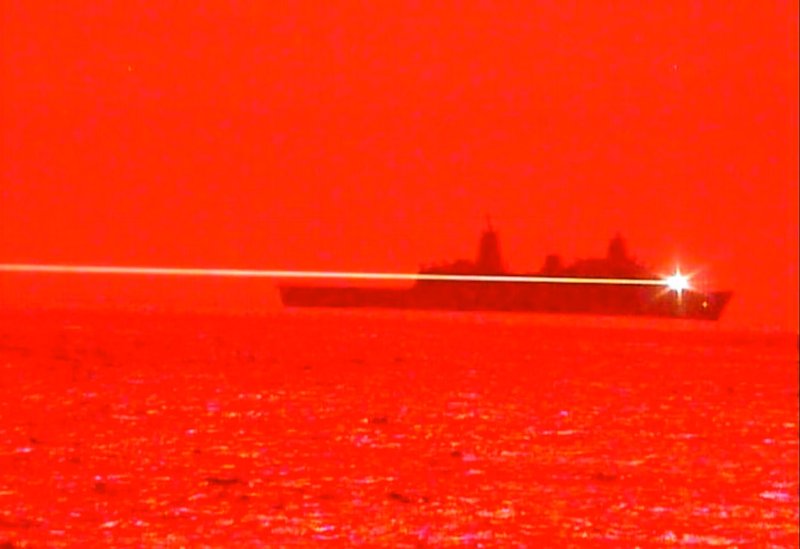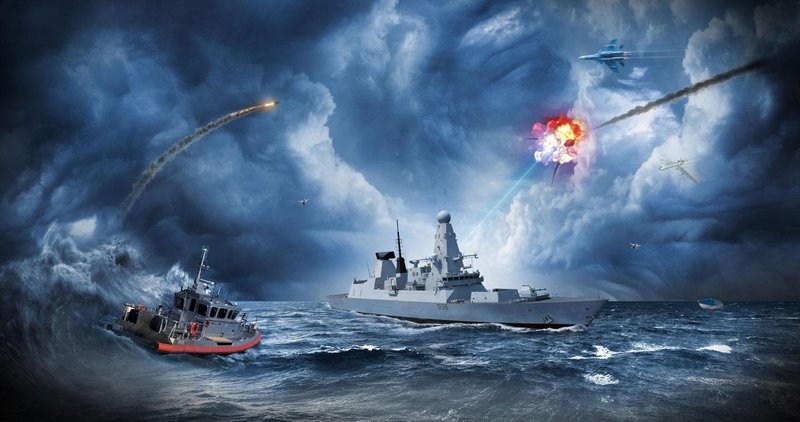Throwing new light – could directed energy weapons tip the Red Sea balance?
Throughout January, fighting against Houthi rebels intensified in the Red Sea. At the same time, in Washington DC during the Surface Navy Association event, concerns were raised over naval directed energy weapons’ (DEWs) speed of development. How are these two themes linked, and what’s behind the hold-up?
Since November, Houthi rebels have been targeting merchant vessels transiting the Gulf of Aden and Red Sea’s international waters. These attacks are meant as retaliation to Israel’s actions in Gaza... Continues below
Newsletter Sponsor:

Above: Despite years of development, multibillion-dollar R&D budgets and several successful trials, directed energy weapons are still some way away from routine operation aboard warships. (Photo: USN)
As the rebels are strongly supported by Iran – especially through military material – this is also seen as Tehran indirectly putting pressure on Tel Aviv.
According to US official sources, to date, rebels have deployed a range of weaponry including anti-ship and close-range ballistic missiles, land attack cruise missiles, UAVs and USVs.
Western navies have responded with the establishment of the US-led coalition Operation Prosperity Guardian. To date, multiple allied nations have taken part, including Australia, Bahrain, Canada, France, Greece, the Netherlands, Norway, Singapore, Sri Lanka and the UK.
Various weapons and capabilities have already been used to strike Houthi missiles and launchers, air defences, radars and deeply buried munition storage facilities. But as the fighting intensifies, questions are emerging as to the sustainability of such efforts, especially as many contributing nations are also involved in supplying Ukrainian forces with military aid.

Schiebel – leading the unmanned evolution
In light of current question marks over Western manufacturers’ ability to keep up the pace of production required to both support Kyiv and maintain national readiness, one solution seems to be in favour: DEWs.
Over the past decade, armed forces in several countries have been looking at DEWs – with varying degrees of advancement and success – because they hold the potential of solving two age-old conundrums: depth of weapons magazine and cost per round.
DEWs do not need rounds, they need energy storage. As such, if a ship can produce the required amount of electrical power, a seemingly inexhaustible striking capability can be fielded.
And compared to, say, an Evolved Sea Sparrow Missile, which cost approximately $1.8 million each, a DEW ‘firing’ comes in at anywhere between $1 and $10. The latest figures for the UK’s DragonFire High Energy Laser put the cost-per-shot at between $12 and $13.
With this in mind, three nations in particular have made noticeable progress in developing DEWs: the US, with a wide variety of ongoing projects (HELIOS, HELCAP, ODIN etc); France (HELMA-P) and the UK (the aforementioned DragonFire). Others are following closely, including China, India, Iran, Japan, Russia, South Korea and Turkey.
But during the SNA event earlier in January, VAdm Brendan McLane, the new commander of the Naval Surface Force, US Pacific Fleet, expressed significant concern over the pace of such DEW programmes.
Other articles in this newsletter:
Who wants to build ships? Why US yards face a workforce crisis
Power projection or sales pitch? Why the Italian Navy is heading for the Pacific
A few systems may have been integrated on destroyers (DDG-51) and cruisers (USS Portland), but little progress has been made in terms of energy (currently only kilowatt (KW) levels have been reached, rather than megawatts (MW)), and industrialisation.
One key issue, according to McLane, is the lack of realism concerning these projects. Rather than expecting them to reach MW level immediately, it should be acceptable to use them with KW effects as part of a layered defence concept.
If anything, even if they cannot neutralise certain types of weapons – namely, missiles – they can be used to take down UAVs and USVs, thus freeing up kinetic ammunition for those bigger threats.
However, beyond a need for realism, there are other matters to consider, such as technical, logistical, financial and human resources concerns.
According to a Government Accountability Office Science & Tech Spotlight article published in May 2023: ‘DEWs are generally less effective the farther they are from the target, and atmospheric conditions and cooling requirements can limit their effectiveness. For example, fog and storms can reduce laser beam range and quality.’

Above: The UK’s DragonFire system, seen here in a dramatic rendering, has a current quoted cost-per-shot of just $12-13. (Image: Leonardo)
The same report cites difficulties in defining their tactical use-space. For instance, high-powered radio-frequency and microwave DEWs can potentially affect all assets in an area, whether friend or foe. Other sources note concerns about possible collateral damage to friendly satellites behind an in-atmosphere target.
Finally, there are likely to be challenges associated with the energy needed for these systems. First there needs to be sufficient real estate space on board ships, both for the system itself and the energy storage capacity needed to fire and cool it.
Second, as this storage may be rather limited at the beginning of DEWs’ roll-out on warships, access to the necessary fuel or electricity needed to power them may be considerably limited in hostile environments.
As such, the key questions are as follows: Can these systems be retrofitted? If yes, how much energy will they use and produce? And what can be targeted based on that assumption?
If technical and logistics issues are solved, these weapons might be cheaper in the long run, but their price tag in the shorter term is still quite significant. For instance, the GAO document notes that the DoD ‘reported spending about $1 billion annually for the last three years on research and development’.
Understandably, with no weapon in current operational use within the USN, one might well worry about the return on investment for that $3 billion.
Finally, with issues of finding and retaining a skilled workforce plaguing the shipbuilding industry – and ammunition manufacturing for that matter – one can also wonder: What skills are needed to build these weapons? Are they already available? If so, would they have to be drawn from other programmes that are already struggling to meet their schedule?
Ultimately, there is no doubt that DEWs would be an excellent addition to coalition navies’ arsenals, both in the Red Sea and in general. After all, even if they aren’t as powerful as originally intended – at least not in the short term – they would still be efficient against UAVs, USVs and perhaps some other weapons, freeing up expensive missiles as noted above.
Yet the speed at which programmes are progressing, combined with the potential lack of a skilled workforce and manufacturing set-up to ramp up production, it is not likely that these weapons will be deployed in the region in time to make a difference.
Well, at least in one respect, one would like to hope so… otherwise it would mean the conflict has gone on for at least another five to ten years.
Don't want to miss out on future Decisive Edge content? Make sure you are signed up to our email newsletters.











